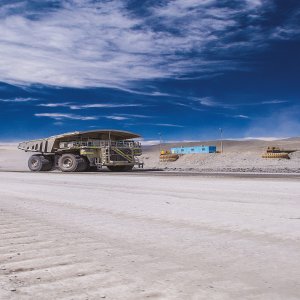Blockchain, and Virtual Mining: Time to Structure the Technological Disruption

STORY INLINE POST
Q: What trends has Deloitte identified in the mining industry and how are these reshaping the sector?
A: We are in the middle of a bull run for the industry. Gold is in fairly stable territory while silver unfortunately is still waiting for its moment to shine. Copper and zinc are enjoying positive momentum mainly because of supply constraints. Many commodities are in a good place thanks to the growing popularity of electric vehicles (EV). Cobalt, copper, high-grade nickel, lithium, and graphite have all gained renewed interest as a result of EV growth. While today’s vehicles usually require 20kg of copper on average, the vehicles of the future will require as much as 80kg per unit. Disruptions from digitalization and new technologies are also fueling major trends within the industry.
Q: How is technological disruption affecting human talent?
A: One example is that there is an increasing need for data scientists as digital disruption sets in throughout the sector. In the past, data scientists would not necessarily have been attracted to the mining industry. With its remote locations and relatively unattractive geographies, mining has always found talent attraction a challenge. This issue is one of the main reasons behind remote mining applications that can bypass the need for on-site operations. This should positively impact talent retention and the future of work within the industry, particularly the push to foster diversity and inclusion. BHP has been at the forefront of this with its aspirational plans for a 50-50 ratio target of male versus female employees by 2025.
Q: What lessons can Mexico learn from Canada regarding its nascent financing models?
A: Despite some nervousness in the short term, there is an overwhelming sense of optimism for the medium term. This is because financing mechanisms have drastically changed in response to the industry’s technological disruptions, and that is not necessarily a bad thing. The traditional financing model involved issuing shares, requesting a loan from the bank, or setting up a joint venture, among other measures. The banks are still a major part of new financing schemes but are becoming increasingly risk averse. But now the industry has a variety of financial models to choose from such as gold and silver streamers. These become more complex but have generally done pretty well, especially during harder times when they proved a reliable source of financing to build projects or to develop new assets. Then there’s working with investors, pension plans, and the like, that are a rather new practice. The TSX, the LME, and other sizable private equity funds are also mainstream finance sources. Given the variety of options, the financing landscape is much more complex as it is different from what we had in the past and we have to spend more time structuring it.
Q: How do you expect recent geopolitical developments to impact the mining industry in the foreseeable future?
A: Despite the recent political noise about threats of steel and aluminum tariffs, the reality is the world needs commodities. There is a prevalent belief that countries such as China or India will reach a point where they will need fewer commodities but the numbers say otherwise. While there will always be peaks and valleys in the mining industry, the outlook remains quite positive. The fundamentals are in place, mining companies have gone to great lengths to get their houses in order, and more collaboration within the industry is the order of the day and is helping to sort out mining’s image. Technology issues are being addressed with chemistry innovations and miners are working with communities to develop friendlier practices when it comes to explosives, among other examples.
Yet, technology can have an impact in other ways. Blockchain, an important new development, could allow tokens for underground gold to be created to serve as currency, bypassing the need to mine it at all. And virtual mining and simplified supply chains could derive from this. The pace of technological innovation just continues to pick up.
























